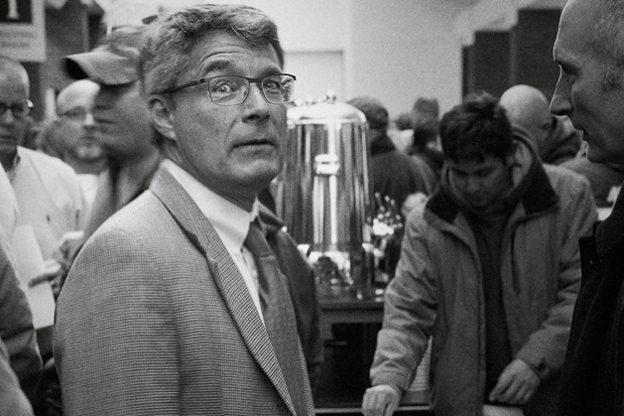

The incomplete evolution of Lee Schafer
The first time I remember Lee Schafer writing about PolyMet Mining, it was to notice, in late 2013, that the Supplemental Draft Environmental Impact Statement for PolyMet said next to nothing about financial assurances:
The big environmental report just released, called the supplemental draft environmental impact statement, has just a small section on financial assurance that says next to nothing.
This seemed to trouble Schafer at the time.
Parenthetically, there was a hearing in a Minnesota House committee in February, 2014 on the very subject of financial assurances by PolyMet. Lots of people came and testified, including me, and offered written testimony. The two heavy hitters who came to speak for the DNR and PolyMet offered no written testimony or any specifics about what would be put up or required for financial assurances. (I asked the DNR if its witness, Jess Richards, the Director of the Land and Minerals Division, had offered anything in writing, and they said they thought The Uptake had posted a YouTube video. Thanks; I was there.) Vice President of PolyMet, and former Commissioner of the Pollution Control Agency, Brad Moore, just told the committee that PolyMet was a “real company,” provoking a twitter of laughter around the room.
The second time that I remember Lee Schafer writing about PolyMet, he was all in on the company’s prospects. I wrote about it in a story here: Lee Schafer: PolyMet tout. In this October, 2015 column, Schafer relied on two sources: the CEO of PolyMet who, along with several other PolyMet insiders, had just completed a series of transactions selling off PolyMet shares or taking money out of the company till in exchange for stock options. I guess they didn’t tell Schafer about that. Maybe they did.
Schafer’s other source was a paid stock tout for PolyMet.
The third time I remember Lee Schafer writing about PolyMet was in June, 2019, after Glencore had obtained a majority interest in PolyMet’s equity in a private transaction, after being its largest shareholder and only lender for a decade. The move diluted all the little people shareholders, Karin Housley, for example, into nothing. Gee, people, wrote Schafer, you should have seen this coming! This was Glencore’s deal from the beginning!
Those must have seemed like especially ungracious remarks to investors who became interested in PolyMet after Schafer’s glowing 2015 column. And there were apparently some who did, as you can see from the bump in the stock chart in the link to the story about the 2015 column.
Which bring us to the fourth time I remember Lee Schafer writing about PolyMet. I don’t need much of a memory, really, because it was in a column published in the paper edition of the Star Tribune on February 1st: Naifs like me thought the PolyMet project would be decided on economics. It’s a mea sorta culpa.
Just as in his 2015 column touting PolyMet, this one relied on two quoted sources: Senate Republican leader Paul Gazelka and Nancy Norr; Norr chairs Jobs for Minnesotans, an astroturf organization formed in the wake of the Citizens United decision. Norr’s real job is as an executive with Minnesota Power, which has a big dog in the mining fight, since its big, coal-fired, mercury spewing electric generation plant at Cohasset sells a lot of electricity to the mines.
Schafer identified Norr’s association with Minnesota Power, but he didn’t describe the mine-mercury thing-y. Nor did he describe the fact that Minnesota Power’s parent’s CEO is Alan Hodnik, also a PolyMet director, and whose friends and relations never met a mining sycophant they wouldn’t finance. (See the link in the previous paragraph.)
I guess there are no environmentalists in Schafer’s Rolodex.
Norr bemoaned the fact that it was only those pesky environmentalists who showed up at meetings about PolyMet. Yes, I guess that’s true.

Speak for yourself | Steve Timmer photo
That’s Range Senator David Tomassoni behind and operating the mining puppet, by the way. Very lifelike, don’t you think? It was part of the debutante ball put on for PolyMet by the DNR, the US Corps of Engineers, and the US Forest Service in January of 2014. Have you ever been to the Boat Show? It was a lot like that. Billy Mays was the only thing missing.
Schafer is right about one thing though: legitimate economics has nothing to do with PolyMet. If all of the externalities of sulfide mining and the risks of catastrophic loss and destruction are allocated to PolyMet, we wouldn’t get anywhere near this stinker.
Thanks for your feedback. If we like what you have to say, it may appear in a future post of reader reactions.

